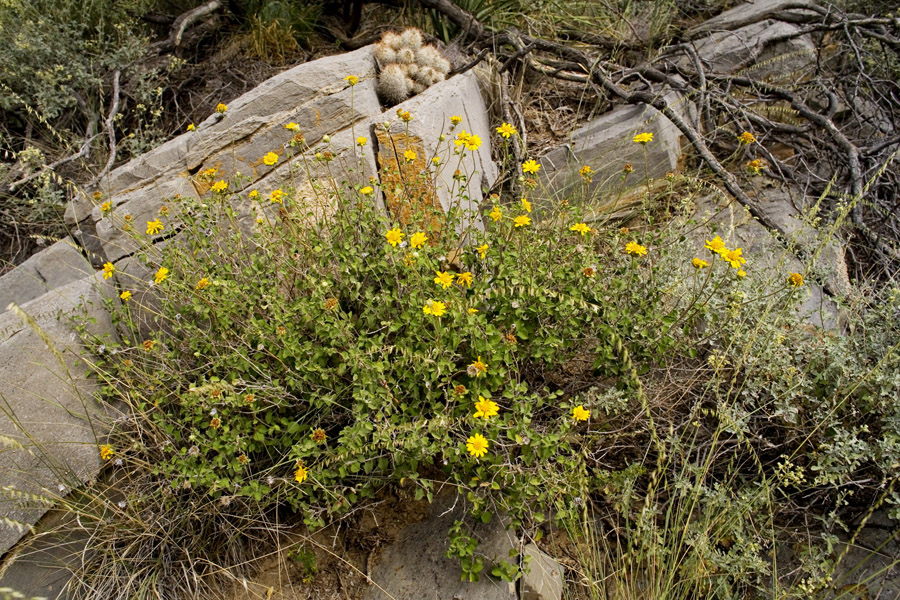Jefea
|
Family: Asteraceae |
Subshrubs or shrubs, 10-100[-200+] cm. Stems erect, branched ± throughout. Leaves cauline; opposite (proximal) or alternate; petiolate; blades (usually 3-nerved) deltate, lanceolate, oblanceolate, or suborbiculate, bases cuneate to truncate, margins entire or lobed [toothed], faces scabrellous to hispid and gland-dotted [densely woolly abaxially]. Heads radiate, borne singly. Involucres campanulate to hemispheric, 6-10+ mm diam. Phyllaries persistent, [22-]26-38+ in 3-4+ series (outer 2-6+ spreading, similar to foliage in shape, texture, and indument, inner appressed, more papery to scarious or membranous). Receptacles convex to conic, paleate (paleae persistent, lance-linear, conduplicate). Ray florets 5-13[-20], pistillate, fertile; corollas yellow to orange. Disc florets 30-60[-100+], bisexual, fertile; corollas yellow to orange, tubes shorter than or about equaling funnelform throats, lobes 5, deltate. Cypselae weakly obcompressed, 3-angled (peripheral) or strongly compressed (inner) and oblanceolate to rounded-cuneate, some or all winged; pappi fragile or persistent, of 2-3 subulate scales or awns plus 2-8+ shorter, distinct or basally connate, erose or lacerate scales (often with an additional seta on inner shoulder of each cypsela). x = 14. |

